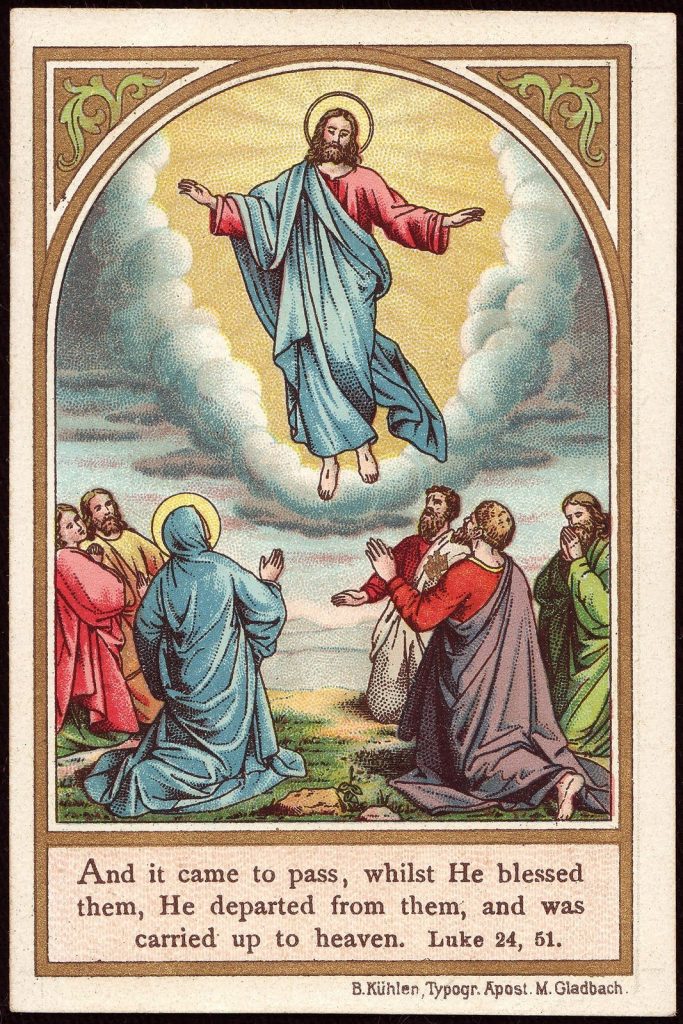by Rev. Antony W. Ball

This is an ultra-traditional depiction of the ascension, which St. Luke mentions twice1, but is not really described in scripture.
Such artistic representations as this must inevitably be offered in a spirit of “as good a guess as any”, because we are not actually told anything about Jesus’ appearance – whether He was tall or short, fat or thin, we’ve really no idea – or about the whether the clothes He and the apostles wore were anything like as colourful or grand as this painting would suggest.
All Luke tells us in his Gospel is…
…He led them out as far as Bethany,
and blessed them with uplifted hands;
and in the act of blessing He was parted from them.2
…and in the Acts of the Apostles he3 writes:
When He had said this, as they watched,
He was lifted up and a cloud removed Him from their sight.
That’s all we’re actually told. Further details would be interesting, of course, but not of any importance. Whether “a cloud removed Him from their sight” means that He stepped onto a cloud and was carried up as in an elevator-type lift, or whether it means it grew foggy and when the fog had dispersed He’d gone, who cares? Since the time of the exodus, a cloud had represented God’s presence so what matters is that the risen Jesus, while remaining recognizably human, had gone ‘up to heaven’ to ‘sit at God’s right hand’ for all eternity.
Scripture frequently struggles to describe divine things in human words – expressions like ‘up to heaven’ and ‘sit at God’s right hand’ obviously neither mean that heaven is physically above us, nor that God has a right hand – such expressions are just attempts to use human words to describe divine things. Those attempts are always doomed to fail because human words are invented to describe human situations. Even if God were miraculously to give us some divine words, we wouldn’t know what they meant – hence Jesus’ use of parables.
So we, like Jesus, have to use human words as we try to describe divine happenings – such as the ascension. After His resurrection, Jesus appeared to his disciples at various times – for example near His tomb5, in the Upper Room6, on a beach in Galilee7, on the Road to Emmaus8 – so they must have got quite used to Him ‘coming and going’ and may even have been always looking forward to His next ‘appearance’. Sooner or later that had to come to an end because He had promised to be with all of them continually, wherever they were, in the form of the Holy Spirit9 (or Advocate, or Comforter); so the ascension was staged as a kind of ‘final appearance’, after which they would no longer expect Him to reappear in His resurrection body. Remaining in human form as He ascended meant that God would continue to be aware of what human experiences were like – God knows what it’s like to be human – and so He can come alongside us, in the form of His Holy Spirit, to comfort and strengthen us.
.
1 Lk xxiv 50,51 & Acts i 6-11 2 Lk xxiv 50,51 3Assuming, as most scholars do, that Luke wrote Acts
4 Acts i 9 5 Jn xx 10-18 6 Lk xxiv 36-43 7 |Jn xxi 1-13 8 Lk xxiv 13-32 9 Jn xiv 25-29